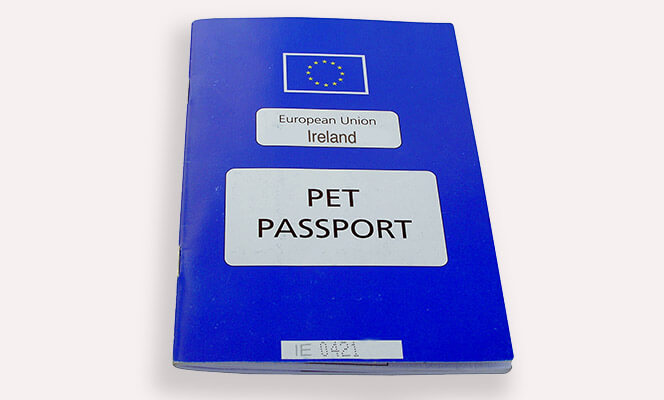If you want to live in Dublin, it may be important for you to be able to bring your furry friend along too. While pet travel is easier if you’re coming from another EU country, bringing pets to Ireland from further afield is completely doable too.
There are a number of different factors to consider before you plan your move. We’ll walk you through what you need to know.
1. Meeting minimum entry requirements
For EU member states
Pet dogs, cats and ferrets from EU countries can travel freely within the EU – as long as they have an up-to-date EU Pet Passport.
This document enables your pets to avoid quarantine and can be obtained through a vet. But you’ll need to arrange it well in advance of travelling because it can take some time to get everything in order.
To obtain a pet passport for Ireland, your dog, cat or ferret will need to be microchipped and then subsequently vaccinated for rabies. They will need to receive their shot at least 21 days before travelling too.
For dogs, there’s an extra requirement. They must also be treated for tapeworm 1-5 days before they’re due to land in Dublin. Your vet will mark this on your dog’s passport. Although it’s worth noting that this final step isn’t required for dogs travelling directly to Ireland from Finland, Malta or Norway.

If you plan to bring more than five animals with you, different rules will apply. Unless you plan to enter them in a competition, you’ll need to meet the EU’s rules for trading animals. This means you’ll need to get them all examined within 48 hours of travelling. You’ll need a veterinary cert to prove it too.
If you’re hoping to bring a rabbit, bird or rodent with you, there’s a completely different set of rules.
For low-risk countries
If you’re bringing pets to Ireland from a low-risk country outside of Europe, the process is exactly the same. The only difference is you’ll receive an EU animal health certificate instead of an EU pet passport.
Right now, the likes of Iceland, Norway, Switzerland, New Zealand, Australia, the US, Argentina, Mexico, Chile and Japan are all on the low-risk list. However, you can check the current status of your country here.
For non-EU countries that aren’t on the low-risk list
Pets from high-risk countries need to be microchipped and vaccinated against rabies as well. But they also need to get a blood test to prove they have sufficient antibodies. This test needs to happen three months before travelling to Ireland.
Dogs must also be treated against tapeworm between 24-120 hours before arriving in Ireland. Again, you can check out rules for your specific country.
2. Notifying the authorities
At least 24 hours before you arrive, you need to send an advance notice form to the relevant Irish port or airport. You can send the form to:
3. Entering the country
On arrival, your pet must undergo a compliance check. This will be arranged in advance after you notify the authorities of your pet’s arrival. If your pet entered another EU country first and had a check there, it won’t need to undergo another one.
If your pet doesn’t meet the requirements set out above, it may be refused entry and returned to the country you travelled from. Alternatively, your pet may be placed into quarantine where it can be tested or treated to meet the entry requirements. Where quarantine or treatment is necessary, you may need to cover the costs involved.




